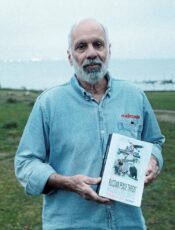Missiles meant to "protect" the west against the east also kill themselves. On January 12, 1985, a solid-fuel motor of an unarmed Pershing 2 missile located at Waldheide base caught fire and killed three US soldiers and injured seven others. 3 G.I.'S DIE AT GERMAN BASE WHEN MISSILE CATCHES FIRE - The New York Times (nytimes.com).
Our persistent actions connecting
hands and hearts across the continents of North America and Europe, west and
east, laid the foundation for the largest international peace conference since
February 1972 when 1200 delegates from 84 nations met in Versailles to plan
actions against the US war in Southeast Asia. In October 1986, twice that many
delegates--2200 from 2,468 organizations in 136 countries--met in Copenhagen at
the World Peace Congress.
As a peace activist-journalist, I reported in print and radio from Stuttgart, from
the Versailles' conference, and Copenhagen's conference as co-chair of the
journalist workshop. We were 254 journalists covering from inside. We pledged
to uphold the Helsinki Accords of August 1975 regarding the use of information
in the context of "strengthening peace and understanding among peoples; to
cooperate irrespective of their economic and social conditions."
Conferees' main goal was to stop the proliferation of nuclear weapons and to
dismantle those existent. UN General Secretary Javier Perez Cuellar, India PM
Rajiv Gandhi, and US Senator Edward Kennedy sent greetings. Copenhagen mayor
Egon Weidekamp, a Social Democrat, opened the conference. "We can be of many
convictions, but the desire for peace unites us."
Soviet's peace organization, World Peace Council, was present, and the Soviet leader Mikjail Gorbachev had declared the goal of eliminating all nuclear weapons. Unlike US-American leaders, he did not think economic and political systems led by elites were more important than peace. So, in the minds of the owners and editors of mass media, if Russians wanted peace there must be something fishy about that.
Despite the mass media's reluctance to support world-peace efforts, our resistance coupled with de-escalation efforts by Gorbachev led to the Intermediate-Range Nuclear Forces (INF) Treaty.
In January 1986, Gorbachev had publicly proposed a three-stage program for abolishing all the world's nuclear weapons. He convinced Reagan to meet in Reykjavik to discuss deescalating as we met in Copenhagen. Reagan refused to go as far as Gorbachev but within months Gorbachev's actions de-escalating nuclear weaponry could not be dismissed. Russia reduced by half its long-range nuclear missiles. On December 8, 1987, the INF treaty was signed; passed by the US Senate on 27 May 1988, and ratified by both world leaders on June 1. Mikhail Gorbachev - Wikipedia
The INF Treaty banned all of the two nations' land-based ballistic
missiles, cruise missiles, and missile launchers with ranges of 500-1,000
kilometers, and 1,000-5,500 km. By May 1991, the nations had eliminated 2,692
missiles, followed by 10 years of on-site verification inspections.
Intermediate-Range
Nuclear Forces Treaty - Wikipedia
President Donald Trump withdrew the United States from the INF treaty in October 2018.
Despite the headway decreasing atomic weaponry, Denmark's right-wing parties, and a majority of voters, would not risk confronting the United States' laissez-faire attitude about where their atomic weapons should be. US war ships docking in Denmark were known to contain nuclear missiles.
When a US nuclear missile-carrying war vessel docked in Copenhagen harbor, in the spring of 1988, SD leader Sven Auken demanded that Conservative Party PM Poul Schluter deliver a letter to the captain explaining Denmark's policy prohibiting the presence of any nuclear weapons on/over Danish territory. President Reagan made it clear that no such letter would be accepted. For the only time in Danish history, a government called for an early election based upon foreign policy. The right-wing had won the regular election nine months before, and on May 10, 1988, a majority of voters returned the right-wing government to power. This led to the replacing "footnote" foreign policy with an "active" one. Atomvalg og en ny regeringskonstellation | lex.dk - Danmarkshistorien
Denmark's subservience to US/NATO had a higher priority than the threat of nuclear war. Henceforth to this day, either all or nearly all Denmark's political parties, including Social Democrats under bourgeois leadership, are at war wherever the US dictates. The vast majority of the population have accepted domination by the United States.
The first war Denmark participated in was Bush I's invasion of Iraq, in 1991.
Denmark's War Reality: The Toll
Thirty thousand troops and mercenaries sent out 67,371 soldiers to war between 1990 and 2017, and running, as an aggressor in half-a-dozen countries, either as part of NATO or part of the "coalition of the willing". Danish troops have also been in two dozen countries as part of UN peacekeeping forces. Se, hvor danske soldater har kà �mpet - og er faldet | Penge | DR
Next Page 1 | 2 | 3 | 4 | 5 | 6 | 7 | 8 | 9
(Note: You can view every article as one long page if you sign up as an Advocate Member, or higher).





